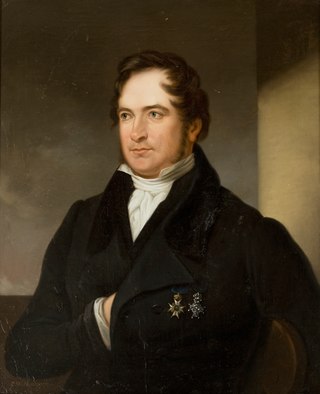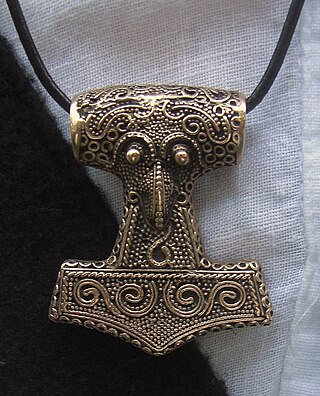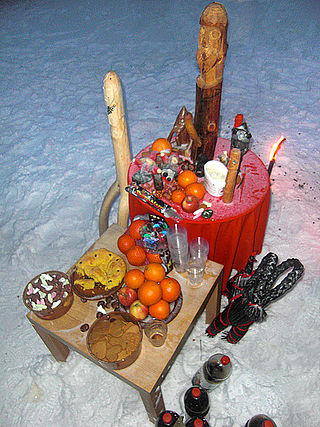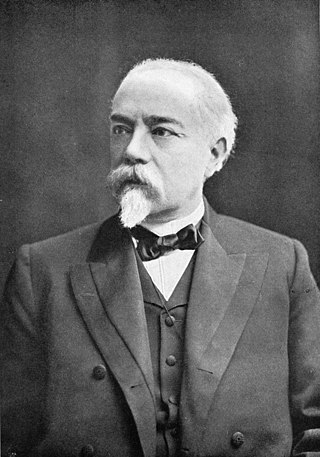
Gunhild Bricken Kristina Lugn was a Swedish poet and dramatist and member of the Swedish Academy.

Erik Gustaf Geijer was a Swedish writer, historian, poet, romantic critic of political economy, philosopher, and composer. His writings served to promote Swedish National Romanticism. He was an influential advocate of conservatism, but switched to liberalism later in life.

Rut Birgitta Dahl is a Swedish former politician of the Social Democratic Party. Dahl was a Member of Parliament from 1969 to 2002. She served as Minister for Energy from 1982 to 1990, as Minister for the Environment from 1986 to 1991, and as Speaker of the Parliament from 1994 to 2002. She was the chairman of the Swedish section of the United Nations Children's Fund (UNICEF) between 2005 and 2011.

Heathenry, also termed Heathenism, contemporary Germanic Paganism, or Germanic Neopaganism, is a modern Pagan religion. Scholars of religious studies classify it as a new religious movement. Developed in Europe during the early 20th century, its practitioners model it on the pre-Christian religions adhered to by the Germanic peoples of the Iron Age and Early Middle Ages. In an attempt to reconstruct these past belief systems, Heathenry uses surviving historical, archaeological, and folkloric evidence as a basis, although approaches to this material vary considerably.
Forn Sed Norge, formerly Foreningen Forn Sed, is a Norwegian heathen religious organization.

Birger Nerman was a Swedish archaeologist, historian and philologist who specialized in the history and culture of Iron Age Sweden.

In the modern Pagan movement of Heathenry there are a number of holidays celebrated by different groups and individuals. The most widely observed are based on ancient Germanic practices described in historical accounts or folk practices; however, some adherents also incorporate innovations from the 20th and 21st centuries.
Samfälligheten för Nordisk Sed is a Swedish modern pagan organisation founded in 1997. It adheres to a version of Nordic neopaganism that emphasises folk beliefs and claims an unbroken continuity through these. The organisation has few members and is closed to outsiders.

Modern paganism in Scandinavia is almost exclusively dominated by Germanic Heathenry, in forms and groups reviving Norse paganism. These are generally split into two streams characterised by a different approach to folk and folklore: Ásatrú, a movement that been associated with the most innovative and Edda-based approaches within Heathenry, and Forn Siðr, Forn Sed or Nordisk Sed, a movement marked by being generally more traditionalist, ethnic-focused and folklore-rooted, characterised by a worldview which its proponents call folketro. Forn Siðr may also be a term for Scandinavian Heathenry in general. Vanatrú defines the religion of those individuals or groups in which the worship of the Vanir dominates.
Fuat Deniz was a Swedish sociologist and writer of Assyrian descent. Until his murder in 2007, he worked as a lecturer in sociology at the Department of Social and Political Sciences at Örebro University.

Carl David af Wirsén was a Swedish poet, literary critic and the Swedish Academy's permanent secretary 1884–1912.
Heathenry in the United Kingdom consists of a variety of modern pagan movements attempting to revive pre-Christian Germanic religiosities, such as that practised in the British Isles by Anglo-Saxon and Nordic peoples prior to Christianisation.

General Karl Hilmer Lennart Ljung was a Swedish Army officer who served as Supreme Commander of the Swedish Armed Forces from 1978 to 1986. During Ljung's eight years as Supreme Commander many events of importance for Swedish security and defense policy occurred. Sweden had five different governments under four prime ministers from different political sides. Prime Minister Olof Palme was assassinated, the submarine incidents culminated with the Soviet submarine U 137 running aground in Karlskrona and the decision of developing a new fighter aircraft came through.

Admiral Stig (Hansson) H:son Ericson was a Swedish Navy naval officer. He was Commander-in-Chief of the Coastal Fleet from 1950 to 1953 and the Chief of the Navy from 1953 to 1961. After retiring from the Navy in 1961, Ericson held court offices in the Royal Court of Sweden. He was First Marshal of the Court from 1962 to 1973 and Marshal of the Realm from 1966 to 1976.
The Nordic Asa-Community is a Heathen religious organisation founded in Sweden in 2014.
Gunnar Sandelin is a Swedish social worker, author, lecturer, and journalist. He has worked for Sveriges Television and been the press manager at Barnens rätt i samhället. Sandelin has stated that mainstream media reporters avoid writing the truth about the consequences of Sweden's migration policy due to fear of reprisals. Together with Karl-Olov Arnstberg, he has written the book Invandring och mörkläggning and a sequel. Sandelin has been a debater at Nya Tider.
The Swedish military research facility has estimated that 300 individuals traveled from Sweden to serve as foreign fighters on behalf of ISIS and Jabhat al-Nusra in the Syrian Civil War, as well as in the Iraqi Civil War. The terrorism expert Magnus Norell claimed in an interview with Dagens Nyheter that the actual number might be twice as high. A law was passed in 2016 criminalizing traveling to conflict zones with the purpose of serving as a foreign fighter. As of May 2020, none of the Swedish foreign fighters have been convicted under the new ban on traveling with terroristic goals ("terrorresor"). The majority of jihadist foreign fighters departed to join ISIS and Jabat al-Nusra before the new law came into effect.
Oloph Eric Fingal Bexell is a Swedish priest and professor emeritus in church history at Uppsala University.











